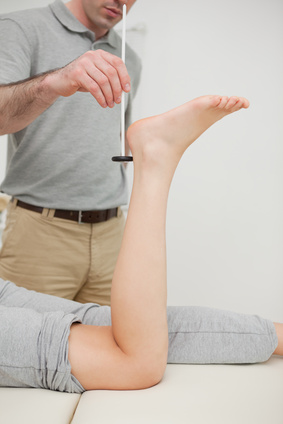 Your physical therapist can help you reduce the risk of injuring your heel with specific stretches, exercises and warm-ups that will prepare your foot for action. He/she can help you choose the right shoes for specific activities. Footwear varies widely and a shoe that’s appropriate for power walking won’t be appropriate for jogging or running a marathon.
Your physical therapist can help you reduce the risk of injuring your heel with specific stretches, exercises and warm-ups that will prepare your foot for action. He/she can help you choose the right shoes for specific activities. Footwear varies widely and a shoe that’s appropriate for power walking won’t be appropriate for jogging or running a marathon.
Many people have developed mechanical dysfunction in their gait that leads to improper foot placement. Your physical therapist can examine your gait while walking, jogging and running to determine if retraining or realignment is necessary. He/she can help if arthritis or chronic conditions are involved.
Orthotic devices can be prescribed to ease pain and distribute weight more evenly for comfort. If you’re overweight or your employment requires extensive time in a standing position, your physical therapist can recommend accommodations and ergonomic solutions to relieve stress on the entire foot and the rest of the body.
Manual manipulation may be employed to improve flexibility and mobility. If heel pain is caused by a weakness in the lower leg, hip or core, you’ll have access to technologically advanced methods to strengthen those areas and improve endurance. Pain in the heel can originate in the back and spinal assessments are effective for relieving pain in any part of the body.
Manual therapy, laser, dry needling and electro-stimulation may be used to loosen tight muscles in the calf and foot, relieve pain, and reduce inflammation and swelling. Braces and assistive devices can be obtained to provide support.
You don’t have to be a world-class athlete or compete in marathons to experience pain in your heel. It can result from an incorrect step, being overweight, or participating in active endeavors without the proper warm-up. No matter what the source, your physical therapist can help with preventative measures and treatment if an injury has already occurred.